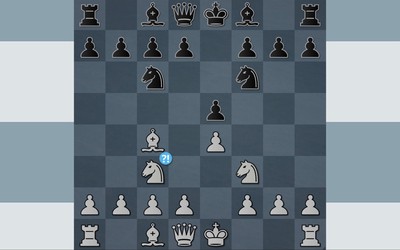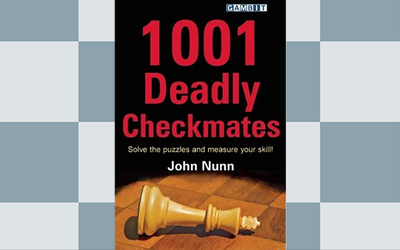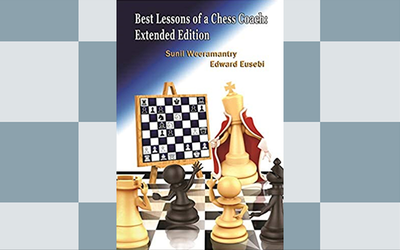
The evaluation ladder
A systematic approach to defining the difference between blunders, mistakes, and inaccurate moves.Introduction
Hello, and welcome!
What are we doing here?
The basic idea of this system is to define different severities of mistake into distinct categories based on how they change the description of the position. Below, you will find a list of verbal evaluations of positions and their desriptions, and definitions for the three major levels of mistake (blunder; mistake; inaccurate/dubious move) based on them.
Okay, but why?
The different terms we use to define mistakes in chess (blunder, mistake, inaccurate move and so on) do not seem to have generally accepted definitions. This is my attempt at solving that problem, and maybe explaining what different mistakes are to new players.
The evaluation ladder
Here you have the "evaluation ladder) in a compact form for ease of viewing. All evaluations are given for White, and are only very rough estimates: they should work best for evaluating the games of strong amateur tournament players, and players with the lower FIDE titles.
Decisively better/winning (+3.5 and up)
Clearly better (+2.0 to +3.5)
Better (+1.2 to +2.0)
Somewhat better (+0.6 to +1.2)
Slightly better (+0.2 to +1.2)
Equal/drawn/unclear (-0.2 to +0.2)
Slightly worse (-0.3 to -0.6)
Somewhat worse (-0.6 to -1.2)
Worse (-1.2 to -2.0)
Clearly worse (-2.0 to -3.5)
Decisively worse/losing (-3.5 and down)
Mistake levels, with examples
Here you will find brief verbal descriptions of each type of mistake, with an example for each.
Blunder
A move that moves at least three steps down. Typically this involves giving up a significant amount of material, severely disrupting your pieces, or allowing a crushing attack.

Black could have prevented the lethal ...Be1 with a king move and held a draw, but instead pushed his pawn to c5. Now, after ...Be1, he cannot prevent the loss of his queenside pawns and the game. The game went from drawn (0.0) to losing (-7.0), and the move is therefore a blunder.
Mistake
A move that moves at least two steps down. Often this will entail badly misplacing a piece, losing a (flank) pawn, or doing doing serious harm to your king safety.

White has grabbed a pawn, but Black wins it back with 5...Qd4! 6.Nf3 Qxe4+ 7.Qe2 Qxe2+, with a very pleasant endgame. Before Nxe5, the game was equal (+0.1); now Black is somewhat better (-0.7*),* so this is a mistake.
Inaccurate/dubious move
A move that moves one step down, or stays within one step (e.g. from comfortably drawing to technically drawing). Often these moves slight errors that don't blunder any material, and will instead be moves that misplace a piece or pawn, allow an opposing piece on a good square.

White has played a premature e3-e4 in the Semi-Slav. White was slightly better (+0.4), and now the game is equal (0.0). This is an inaccurate move.
Evaluation explanations
Below, you will find a definition for each "rung" on the evaluation ladder. I have given engine evaluation scores to give you some idea of what I'm talking about, but they are far from accurate or universal: this system applies primarily to a human evaluation of a position.
Decisively better/worse; or winning/losing (+3.5 and up)
One player is winning in just a couple more moves, or the win is a matter of technique due to a crushing attack or large material advantage.
Clearly better/worse (+2.0 to +3.5)
One player needs only one more bad move from the opponent to get a winning advantage, or might win with extremely precise play without further errors from the other side. For example, he might be up an exchange in a middlegame.
Better/worse (+1.2 to +2.0)
One player is already in trouble (e.g. down a pawn for no reason, or with very awkward development) but can usually hold the draw with very precise play in human play.
Somewhat better/worse (+0.6 to +1.2)
One player is a bit uncomfortable and could end in trouble if he is not careful, but for now he should be just fine if he doesn't play poorly.
Slightly better/worse (+0.3 to +0.6)
One played has slightly more comfortable play and/or a tiny advantage, like a better pawn structure in a middlegame, the bishop pair, or a tiny bit more activity, but the game will end in a draw without notable mistakes.
Equal/drawn/unclear (-0.2 to +0.2)
Neither side can claim anything relevant, the position is dynamically equal, there is a forced draw, or the position is so confusing nobody knows who's better.
In conclusion...
- This system defines levels of mistake based on how they change the verbal evaluation of the position.
- Mistakes are defined by how many steps/rungs your move sinks the evaluation on the evaluation ladder:
- levels of mistake:
- blunder: 3+ steps
- mistake: 2 steps
- inaccurate/dubious move: 0-1 steps
- verbal evaluations and roughly corresponding engine evaluation scores
- decisively better/worse; winning/losing (+3.5 and up)
- clearly better/worse (+2.0 to +3.5)
- better/worse (+1.2 to 2.0)
- somewhat better/worse (+0.6 to +1.2)
- slightly better/worse (+0.3 to +0.6)
- equal/drawn/unclear (-0.2 to +0.2)
- levels of mistake:
Thank you for reading! Check my blog for more articles on improvement and other topics.
— Numerot
More blog posts by Numerot

Please stop playing this!
1.e4 e5 2.Nf3 Nc6 3.Bc4 Nf6 4.Nc3?!
It's time to axe classical chess!
...as a time control category, on Lichess.
Book review: 1001 Deadly Checkmates (Nunn, 2011)
A good collection of checkmate exercises with some odd difficulty spikes.
